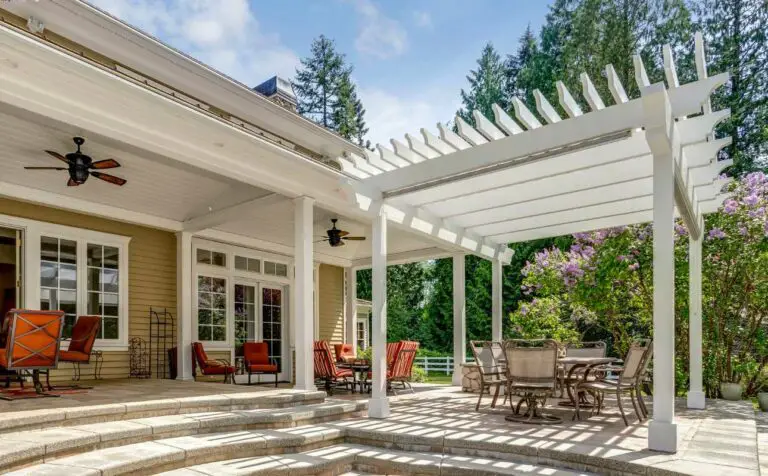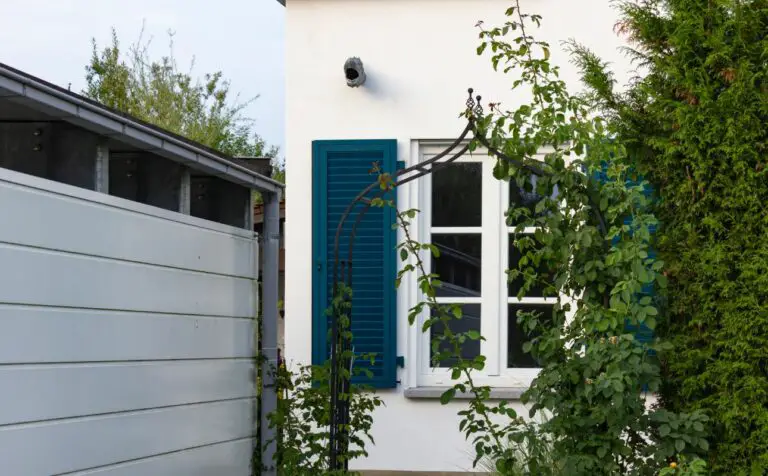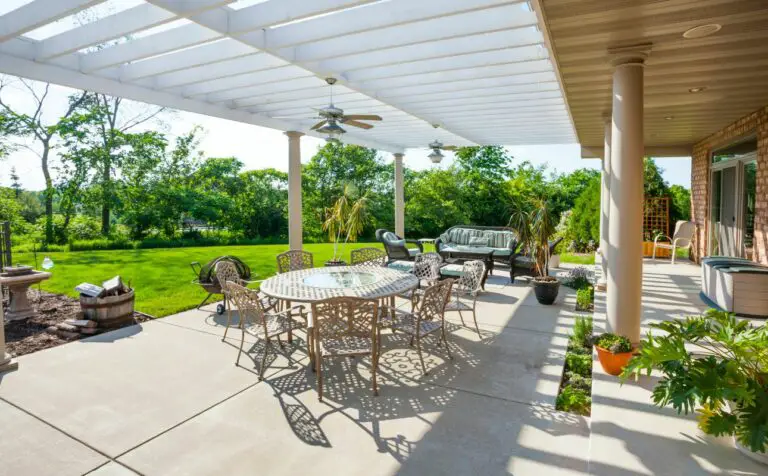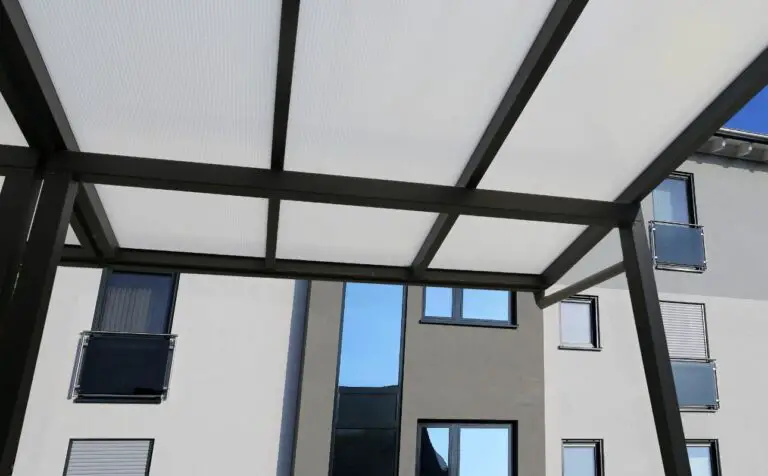Have you ever wondered if you can paint your carport? A well-maintained carport not only adds value to your home but also provides protection for your vehicles. Over time, however, exposure to the elements can cause damage and a faded appearance.
Painting your carport is an easy and affordable way to refresh its look while providing additional protection against harsh weather conditions. Before embarking on this project, it’s important to understand the process involved in painting a carport.
From determining the type of material to choosing the right paint, there are several steps that need to be followed carefully. This article will guide you through each step of painting a carport and provide tips on how to achieve a professional finish that will last for years.
Whether you’re a DIY enthusiast or just looking for ways to improve your property, this article will give you all the information you need to get started.
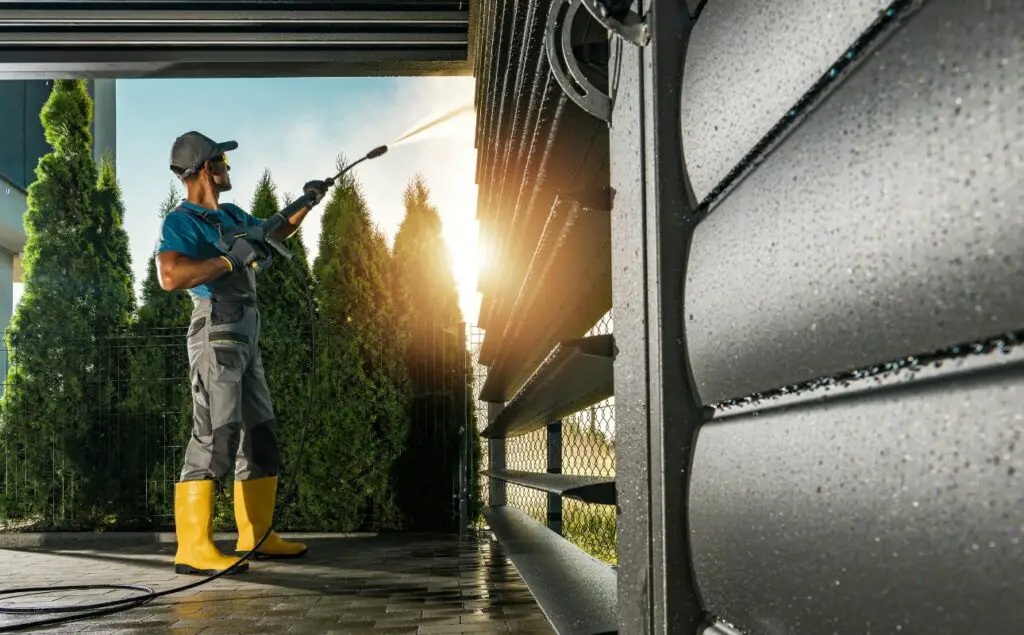
Determine the Type of Material
The determination of the appropriate material to be utilized for a carport’s coating is a crucial aspect that demands thorough consideration to ensure long-lasting, efficient protection against weather elements.
Choosing the right paint for carports based on material type is an important decision that requires careful evaluation of the characteristics of each material. When considering painting carports made of different materials, it is important to take into account factors such as porosity, texture, and surface preparation needs.
For instance, metal surfaces require special primers and paints that adhere well, while wood may need more attention due to its porous nature.
Clean and Prepare the Surface
To achieve a successful and long-lasting paint job on a carport, it is crucial to thoroughly clean and prepare the surface before applying any primer or paint.
Pressure washing is an effective method for removing dirt, grime, and other debris from the surface of the carport. This process helps to ensure that the paint adheres well to the surface.
Sanding and scraping are essential steps in preparing the surface for painting. These techniques help to remove old paint or rust, smooth out any rough spots, and provide a clean slate for applying new primer and paint.
Choose the Right Type of Paint
When choosing the right type of paint, it is important to consider factors such as surface type, desired finish, and durability.
Latex paint is a popular choice for its ease of application, quick drying time, and low odor. Oil-based paints are known for their durability and ability to create a smooth finish but require more prep work and ventilation.
Epoxy paint is highly durable and resistant to chemicals and stains but can be more difficult to apply and requires specialized tools.
Latex Paint
Latex paint is a suitable option for enhancing the appearance and providing protection to carport surfaces. One of the advantages of using latex paint is that it dries quickly, allowing for multiple coats to be applied in a single day.
It is also easy to clean up with just soap and water, making it an ideal choice for DIY projects.
There are some downsides to using latex paint as well. It may not adhere well to certain surfaces, such as metal or wood that have been previously painted with oil-based paint.
It may not provide the same level of durability as oil-based paints and may require more frequent touch-ups.
When compared to oil-based paints, latex paints tend to have less odor and emit fewer volatile organic compounds (VOCs), making them a safer choice for indoor use.
Oil-Based Paint
Oil-based paint is another option for enhancing the appearance and providing protection to surfaces, although it may emit more volatile organic compounds (VOCs) than latex paints.
This type of paint is known for its durability and resistance to wear and tear. It is suitable for high-traffic areas such as carports, garages, and driveways. Painting techniques differ from latex paints due to their thicker consistency.
Oil-based paints take longer to dry compared to latex paints, requiring up to 24 hours before recoating can be done successfully.
They are not water-soluble but require solvents such as turpentine or mineral spirits for cleaning brushes or other painting tools. For those concerned about VOC emissions, there are low-VOC oil-based paint options available that still provide the same benefits without compromising air quality.
Epoxy Paint
Epoxy paint is a highly durable and chemically resistant alternative to traditional oil-based paints, making it an attractive option for industrial settings such as factories or warehouses where heavy machinery and foot traffic are commonplace.
Unlike oil-based paints that require solvents for cleaning up, epoxy paint can be easily cleaned with soap and water. The benefits of using epoxy paint extend beyond its durability and easy maintenance as it also offers superior adhesion to concrete surfaces.
While the initial cost of epoxy paint may be higher than other types of paints, it provides long-term savings due to its longevity and low maintenance needs.
Apply the Paint
The application process of painting a carport involves evenly spreading the selected coating material across the entirety of the surface using a high-quality brush or roller.
It is important to consider the painting techniques used and the color options available to achieve the desired result. Some common techniques include spraying, rolling, and brushing.
When choosing colors, it is essential to keep in mind that darker hues tend to absorb more heat than lighter ones. Additionally, it is recommended to use paint that contains UV protection to prevent color fading over time due to exposure to sunlight.
Proper maintenance and upkeep are crucial for extending the longevity of your painted carport.
Maintenance and Upkeep
Regular cleaning of carports is essential to maintain their performance and prolong their lifespan. Touch-up painting can also be done to cover up any scratches or chipped paint, and this should be undertaken using appropriate materials and techniques.
Professional services may be necessary for extensive repairs or maintenance tasks that require specialized equipment or expertise.
Regular Cleaning
Maintenance of outdoor structures requires a thorough and consistent cleaning regimen to prevent dirt and debris buildup. Regular cleaning is especially important for carports, as they are often exposed to harsh weather conditions that can cause stains and discoloration.
Power washing is an effective method for removing dirt, grime, and other debris from the surface of a carport. It uses high-pressure water spray to blast away built-up dirt, leaving behind a clean surface.
Stain removal may also be necessary for stubborn areas that resist power washing. A mixture of water and mild detergent can be used to scrub away stains from oil spills or other sources of discoloration.
Touch-up Painting
Maintaining the appearance and functionality of outdoor structures is crucial, and touch-up painting can be an effective solution to address any minor scratches or chips that regular cleaning alone cannot resolve.
When it comes to touch-up painting a carport, blending techniques and color matching are key factors to consider for achieving a seamless finish. Blending techniques involve using a brush or sponge to soften the edges of the painted area so that they blend in with the surrounding surface.
Color matching requires finding an exact match for the existing paint color, which can sometimes be tricky but is essential for achieving a professional-looking result.
Consider Professional Services
Hiring professional services can provide optimal restoration outcomes when the touch-up painting is insufficient to address extensive damage or multiple layers of paint, such as a case where a wooden carport has suffered significant wear and tear due to harsh weather conditions over the years.
While DIY carport painting can be cost-effective, it may not provide the same level of expertise, quality, and efficiency that professional services can offer.
The benefits of hiring professionals outweigh the potential drawbacks; including their ability to assess the carport’s condition accurately, use high-quality materials and tools, employ effective techniques that reduce the need for future repainting, and provide warranties on their work.
Factors such as location, size, scope of work, and type of paint used determine the average cost of professional carport painting services.
The Bottom Line
The decision to paint a carport ultimately depends on personal preference and specific circumstances. While painting a carport can enhance its appearance, protect it from the elements, and create a cohesive aesthetic with the surrounding environment, it is important to consider factors such as the carport’s material, existing condition, and local regulations.
Proper preparation, choice of suitable paint, and diligent maintenance are crucial for a successful and long-lasting result.
Whether you opt for a vibrant splash of color or a subtle blend with your home’s façade, painting your carport can be a rewarding endeavor that adds both beauty and functionality to your outdoor space.
FAQ
Is it necessary to use a specific type of paint for a metal carport?
Yes, it is necessary to use a specific type of paint for a metal carport. Metal surfaces require paint that is specifically formulated for metal to ensure proper adhesion, durability, and protection against rust and corrosion. Using the right paint will ensure a long-lasting and attractive finish for your metal carport.
How long will the paint on my carport last before needing to be repainted?
The longevity of the paint on your carport depends on various factors such as the quality of the paint, the preparation and application process, exposure to weather conditions, and maintenance. Generally, a well-painted carport can last anywhere from 5 to 10 years before needing to be repainted, but it can vary. Regular inspections and maintenance can help extend the lifespan of the paint.
Can I use a roller or brush to apply the paint, or do I need to use a sprayer?
You can use either a roller or brush to apply paint to your carport. Both methods are suitable for painting carports, and the choice depends on personal preference and the size and texture of the surface. A sprayer can be more efficient for large areas, but a roller or brush can provide good results as well.
